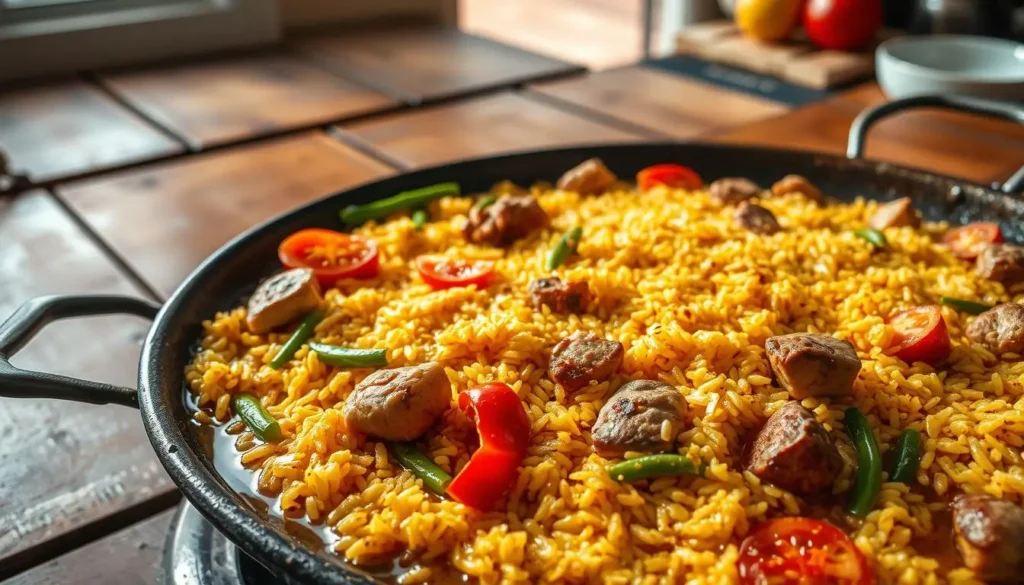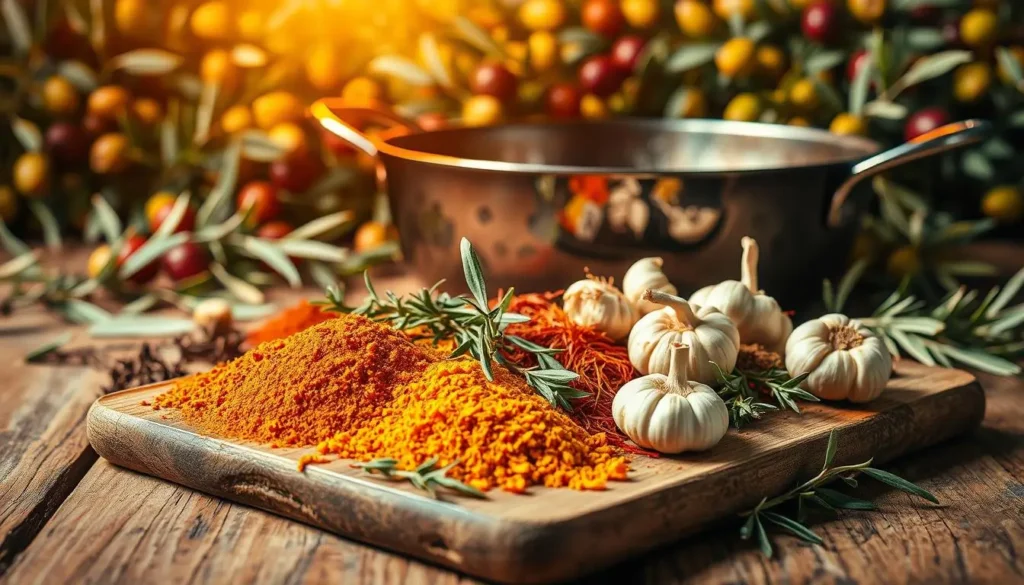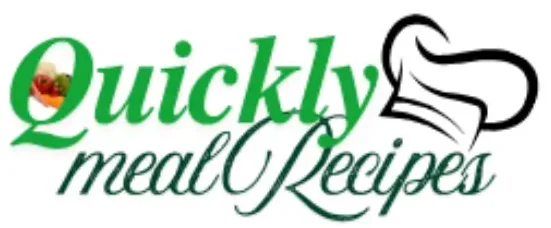Table of Contents
The first time I tasted authentic paella valenciana, I felt like I was in Spain. The bright colors, strong smells, and rich tastes told a story. It was a journey that linked me to cooks who have made this dish for years.
Paella valenciana recipe is more than food; it’s a celebration of Spanish culture. It’s about tradition and community. Every part of this dish shows the heart of Spanish cooking.
In this guide, I’ll share how to make a real paella valenciana. It’s for anyone who loves cooking or trying new dishes. You’ll learn the secrets to making this amazing dish loved by many.
Key Takeaways
- Paella valenciana is a traditional Spanish rice dish from Valencia
- The recipe includes chicken, vegetables, and special Spanish rice
- Authentic preparation needs specific techniques and ingredients
- Cooking time is about 40 minutes
- The dish serves 4-6 people and is very nutritious
- Saffron is key for its unique flavor
- Right cookware is crucial for the perfect paella
The Rich Heritage of Paella Valenciana
Paella Valenciana is more than a dish; it’s a story of Spain’s eastern coast. It comes from Valencia, showing off generations of farming and pride. This paella valenciana tradicional is a true treasure.
In Valencia, rice has been a key part of life for ages. Paella Valenciana is made with local ingredients and old cooking ways. It’s a mix of tradition and taste.
Origins in Valencia’s Landscape
Exploring paella’s history is fascinating. It was made by farmers and workers as a filling meal. They used a paellera to cook it over an open fire.
Cultural Significance and Traditions
Paella Valenciana is loved for its community spirit. It’s a dish for family gatherings, more than just food. It’s about sharing and celebrating together.
| Ingredient | Traditional Quantity | Significance |
|---|---|---|
| Bomba Rice | 1 cup | Foundation of authentic flavor |
| Chicken | 2 thighs | Local protein source |
| Rabbit | 2 legs | Traditional meat component |
| Green Beans | 1.75 cups | Local agricultural product |
Evolution Through Generations
Each generation has kept and changed the paella recipe. It’s gone from simple meals to fancy dishes. Yet, it still keeps its true spirit.
- Cooking traditionally over an open fire
- Using locally sourced ingredients
- Preserving family recipe techniques
- Celebrating communal dining experiences
Essential Ingredients for Authentic Paella
Making a real Paella Valenciana is an art. It starts with picking the right ingredients. I’ll show you the key parts that make simple things into a masterpiece.

Paella Valenciana: Must-Try Classic Dish
Equipment
- Paella Pan – Essential for even cooking.
- Large Spoon or Spatula – For stirring ingredients.
- Cutting Board & Knife – For prepping vegetables and meats.
- Measuring Cups & Spoons – For accurate ingredient portions.
- Grater – To grate the tomato for extra texture.
- Stove or Outdoor Burner – Traditional paella is cooked over an open flame.
Ingredients
For the Paella:
- 2 tablespoons olive oil
- 1 onion finely chopped
- 2 garlic cloves minced
- 1 red bell pepper diced
- 1 green bell pepper diced
- 1 tomato grated
- 1 teaspoon paprika
- ½ teaspoon saffron threads or turmeric as an alternative
- 2 teaspoons salt
- ½ teaspoon black pepper
- 1 teaspoon smoked paprika
- 2 cups short-grain rice Bomba or Arborio rice
- 4 cups chicken broth or seafood broth
- ½ pound chicken drumettes or thighs cut into small pieces
- ½ pound rabbit meat cut into pieces (or more chicken if unavailable)
- ½ cup green beans wide flat beans
- ½ cup butter beans lima beans
- ½ cup frozen peas
- ½ cup artichoke hearts optional
- 1 rosemary sprig optional, for authentic flavor
- 6-8 large shrimp optional, for added seafood flavor
- Lemon wedges for serving
Instructions
Step 1: Prepare the Base
- Heat olive oil in a paella pan over medium heat.
- Add chicken and rabbit, sear for 5-7 minutes until browned.
- Stir in onion, garlic, and bell peppers, cooking for 5 minutes until soft.
- Add tomato, paprika, saffron, salt, and black pepper, stirring for 2 minutes.
Step 2: Cook the Rice
- Pour in rice, stirring to coat with the seasoning.
- Distribute green beans, butter beans, peas, and rosemary evenly.
- Simmer uncovered for 20-25 minutes, without stirring, until liquid is absorbed.
Step 3: Add Final Touches
- Place shrimp (if using) and artichokes on top in the last 5 minutes.
- Once the rice is tender, remove from heat and cover with foil for 5 minutes.
Step 4: Serve
- Garnish with lemon wedges, serve hot, and enjoy!
Video
Notes
- Calories: ~580 kcal
- Protein: ~35g
- Carbohydrates: ~65g
- Fiber: ~5g
- Sugar: ~4g
- Fat: ~18g
- Saturated Fat: ~3g
- Sodium: ~750mg
- Cholesterol: ~100mg
The base of great paella is its ingredients. Many think it’s different, but true Valencian paella has strict rules.
Spanish Bomba Rice: The Culinary Cornerstone
Bomba rice is at the heart of paella. It’s a special Spanish rice that soaks up a lot of liquid but stays just right. For real paella, use 2 cups of this amazing rice.
Saffron: The Secret Ingredient
Saffron is the secret in paella. It gives the dish a bright yellow color and a unique flavor. This spice is what makes true Valencian paella special.
Traditional Meat and Vegetable Components
Many ask, why no onions in paella? But, traditional Valencian recipes don’t use onions. Instead, they focus on these important ingredients:
- Whole chicken (½, approximately 4 pounds)
- Rabbit (½, about 2 pounds)
- Butter beans
- Green peas
- Green beans
The beauty of paella is in its simplicity and quality ingredients. Each part is vital in showing Valencia’s rich food heritage.
Choosing the Right Cookware and Equipment
When making an authentic paella valenciana, the right cookware is key. I’ve learned that the pan you pick can greatly affect your dish.
The perfect paella pan, called a paellera, is essential. The Garcima Pata Negra Paella Pan is a top pick for both home cooks and pros. It’s known for its thin stainless steel, high heat, and durability.
- Thin stainless steel construction for quick heating
- Maximum temperature of 482°F
- Weighs 3 pounds, 12 ounces
- Performs excellently on stovetop and charcoal grill
For four people, a 13-inch pan is best. The best pans have a slight difference in top and bottom diameters. This helps with even heat and prevents burning.
When choosing your paella cookware, consider the material:
- Carbon Steel: Needs seasoning but conducts heat well
- Stainless Steel: Durable and easy to care for, loved by restaurants
- Enameled Steel: Easy to keep up and won’t rust
For your paella valenciana, a thin rice layer is crucial. It ensures even cooking and creates the socarrat – that crispy bottom layer.
Even without a traditional paella pan, you can still make a great dish. A large, wide skillet works well for home cooking. The important thing is to have a pan that lets the rice cook evenly.
Preparation Steps and Cooking Techniques
Making an authentic paella valenciana receta needs care and patience. It’s an art that turns simple ingredients into a masterpiece. I’ll show you the key techniques that make this Spanish dish unique.
Mastering Heat Management
Getting the heat right is key for a true paella valenciana. Use a steady medium-high heat for even cooking. Your paella pan should spread heat evenly, so each ingredient gets the best flavor.
- Start with a well-heated pan
- Maintain consistent medium-high temperature
- Adjust flame to prevent burning
Precision Rice Cooking Techniques
Perfect rice comes from knowing its special needs. Bomba rice, the classic choice, needs careful handling. The most important rule: never stir the rice while cooking. This keeps the rice’s texture and lets the socarrat form.
| Rice Cooking Parameter | Recommended Setting |
|---|---|
| Rice Quantity | 1 1/3 cups |
| Water Ratio | 18 ounces |
| Cooking Time | 10-12 minutes |
Creating the Perfect Socarrat
The socarrat is what makes a paella valenciana stand out. This crispy rice layer at the pan’s bottom needs special care. I crank up the heat to medium-high for the last 2 minutes. This makes the rice golden and crispy without burning.

By using these precise cooking methods, you’ll turn your paella into a true culinary experience. It will capture the essence of Valencia’s rich food tradition.
Traditional vs. Modern Variations
Paella has changed a lot since it started in Valencia. My journey through Spanish food shows how it has evolved. It keeps its roots but also tries new things.
The original paella valenciana de pollo is special. It uses ingredients found only in Valencia. Real recipes include:
- Chicken and rabbit as main meats
- Green beans and local veggies
- Bomba rice with saffron flavor
- Snails as a traditional part
Now, paella has new versions. Seafood paella valenciana de marisco is one. It has:
- Fresh shrimp
- Mussels
- Clams
- Squid
Modern chefs add new twists to seafood paella. They use global ingredients but keep the dish’s heart. Mixed paella mixes meat and seafood, pleasing many.
Paella varies by region, showing its wide appeal. You can find versions with different meats or even without meat. It always surprises and pleases food lovers.
Mastering the Art of Seasoning
Seasoning turns a simple paella valenciana rezept into a feast for the senses. The right mix of flavors is what makes this Spanish dish truly special. Knowing how to blend spices and ingredients is key to a memorable paella.

Seasoning is key when comparing paella to paella valenciana. The Valencian way focuses on subtle flavors that make the dish more than just rice.
Spice Combinations
Mixing the right spices is an art. Here are some top picks:
- Saffron: The golden thread that gives paella its distinctive color
- Paprika: Adds depth and warmth to the flavor profile
- Rosemary: Brings an aromatic Mediterranean touch
- Garlic: Provides a robust foundational flavor
Balancing Flavors
Getting flavors to work together is a challenge. The key is understanding how each ingredient interacts. Saffron, introduced over twelve hundred years ago, is the heart of authentic seasoning.
Regional Seasoning Variations
| Region | Unique Seasoning Characteristic |
|---|---|
| Valencia | Pure saffron, minimal spice intervention |
| Catalonia | More herbs, slightly more complex blend |
| Andalusia | Stronger paprika presence |
Every region adds its own twist to seasoning, showing off local cooking traditions. Knowing these differences lets you make a paella valenciana that truly celebrates its Spanish heritage.
Serving and Presentation Guidelines
Presenting paella valenciana quito-style needs careful attention and respect for Spanish cooking traditions. The way you serve this dish can make it more than just a meal. It can turn it into a special event.
Here are some key presentation tips to keep in mind:
- Serve directly from the traditional paella pan
- Garnish with fresh parsley and lemon wedges
- Allow the dish to rest for 5 minutes before serving
Many people wonder if paella valencia has seafood. But, traditional Valencian paella usually has rabbit, chicken, and veggies, not a lot of seafood.
Authentic presentation is all about sharing. Invite everyone to eat from the pan. This way, you encourage talking and bonding. The dish’s look is as important as its taste.
Here are some serving tips:
- Use a wide, shallow pan for a great view
- Make sure the socarrat (crispy rice bottom) is seen
- Serve at the table for a dramatic effect
Remember, how you present the dish can make it unforgettable. It shows respect for Spanish cooking traditions.
Common Cooking Mistakes to Avoid
Learning to make paella valenciana means knowing some key mistakes to skip. Even skilled cooks can mess up their dish with simple errors. These mistakes can change the whole taste of the paella.
Here are the main mistakes to dodge when making this Spanish dish:
- Never wash the rice – The outer starch layer is crucial for perfect texture
- Avoid stirring the rice during cooking, which releases excess starch
- Use only short-grain Spanish rice like Bomba for authentic results
- Resist adding onions, which can compromise rice consistency
- Do not mix seafood and meat in traditional paella
The secret to a great paella is knowing these detailed techniques. Cook the rice in a shallow pan, just deep enough for your finger. This ensures the rice cooks evenly and stays perfect.
Pro tip: Watch the heat closely. Traditional paella needs 8-10 minutes of high heat, then 8 minutes of low heat. This method creates the socarrat – the crispy rice bottom that’s a must for a real paella.
Don’t overcrowd your pan, as it causes uneven cooking. Remember, the beauty of paella is in its simplicity and the skill behind it, not in too many ingredients.
Conclusion
My journey into Paella Valenciana has been a joy. It’s a dive into Spain’s most famous dish. This tradition brings people together, from Valencia’s beaches to kitchens everywhere.
Learning to make Paella Valenciana is more than just following a recipe. It’s about the patience, passion, and joy of cooking. Every time you make it, you’ll find new things to love, like the crispy bottom and the mix of flavors.
Paella Valenciana is special because it’s both versatile and deeply rooted in culture. You can stick to the traditional recipe or try new seafood versions. Remember, cooking is about love and discovery. Share your meal with friends and family, and let Valencia’s flavors take you on a journey.
So, get your paella pan ready, gather your ingredients, and start cooking. You’re not just making a meal; you’re celebrating culture, community, and the joy of sharing. ¡Buen provecho!

